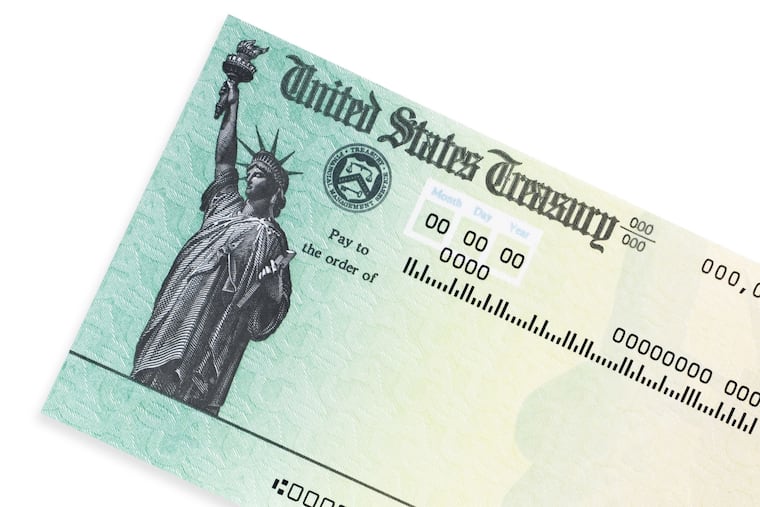How new stimulus package can help minority businesses
The new anti-pandemic aid bill provides loans and grants to minority-owned businesses. Here's a guide.

If you run a minority-owned business, please pay attention: The federal stimulus bill signed this week has help targeted for you.
That aid is much needed, as minority-owned businesses, generally defined as companies that are more than 50% owned by Black, Hispanic, Asian, Native American or female entrepreneurs, have disproportionately suffered during the pandemic. According to a study from the U.S. Chamber of Commerce released this month, minority-owned businesses are “feeling a bigger impact from the pandemic, report assistance being more vital, and have heightened concern about the pandemic’s impact.”
Unfortunately, the CARES Act from last March did not benefit as many minority-owned companies as non-minority ones. For example, the Federal Reserve of New York reported that loans under the Paycheck Protection Program — the act’s primary assistance for small businesses — reached only 20% of all eligible firms in states with the highest densities of Black-owned firms, and in counties with the densest Black-owned business activity, its coverage rates were typically lower than 20%. A lack of cash, weaker banking relationships, and preexisting funding gaps were some of the reasons why even the healthiest Black firms continue to be so financially disadvantaged.
The new legislation aims to help fix this. So, if you’re a minority business owner, how can you take advantage?
More PPP money
For starters, if you want to apply for either a new or second PPP loan through a Small Business Administration–approved lender, there’s now an additional $284 billion available, on top of the $510 billion handed out under the CARES Act. But the rules have been changed to focus on those businesses that are most in need.
Firms now must have fewer than 300 employees at a location (it was previously 500) and show a 25% reduction in their revenue year to year. And for restaurants, there is a special sweetener of somewhat more generous loans. The program has previously been criticized for having too many loans going to too many businesses that were not in need. These revisions should help reverse that.
Set asides for minority-owned companies
That’s because specific amounts have been targeted to minority-owned companies. The government has set aside $15 billion for initial PPP loans and $25 billion for second PPP loans for small-businesses borrowers with 10 or fewer employees as well as businesses in areas deemed to be of low to moderate income. These pools of money will fund loans up to $250,000.
Federal law provides several definitions for such low-income areas, including any census tract with a poverty rate of 20% or higher. To find out whether your business is eligible, contact an approved SBA lender.
Funding for organizations that help minority businesses
The new package also sets aside $15 billion for small community banks and small credit unions as well as an additional $15 billion for mission-based community lenders such as community development financial institutions, certified development companies, minority depository institutions, and SBA Microloan intermediaries. All of these institutions provide critical grants and loans for minority-owned businesses and other companies in disadvantaged areas.
More economic injury disaster loans and grants
There are also new grant opportunities under the SBA’s Economic Injury Disaster Loan Program. This program, which offers long-term (30-year) fixed-rate (3.75%) loans up to $2 million to businesses in pandemic-affected areas (essentially the entire country), has been given an additional $20 billion.
One aspect of the program was that it offered advances on its loans. However, that advance-payment feature ran out of money, leaving many smaller companies, particularly those in lower income areas, short or out in the cold. Under the new stimulus package, the agency is going to resume making such advances.
The program had promised as much as $10,000 in such an advance to qualifying firms. Under the new legislation, such firms will be made whole, up to the $10,000.
Emergency grants for businesses in low-income areas
There are also “emergency” grants under the Economic Injury Disaster Loan Program. A businessperson who applies for a loan under the program can also seek a grant of up to $10,000. To qualify for this, the businesses must be in a low-income community, have fewer than 300 employees, and have suffered a 30% revenue loss, computed by comparing a two-month period in 2020 with the same period last year. Minority business owners can receive these grants regardless of whether their loan application was approved and accepted and even if they previously received a PPP loan.
To get an emergency grant or to apply for an EIDL loan, visit the SBA’s website.
It’s time to act
My final advice: Congress has taken additional steps to provide new money to companies that need it the most. So now, you have to help yourself. Visit the SBA’s website, reach out to their lending community, research the different programs available to you, and talk to a few of the local mission-based community lenders mentioned above.
This is not only a great opportunity to get the financing you need to survive this unprecedented economic downturn, but also to establish relationships with bankers and other organizations that can help your company grow in the future.